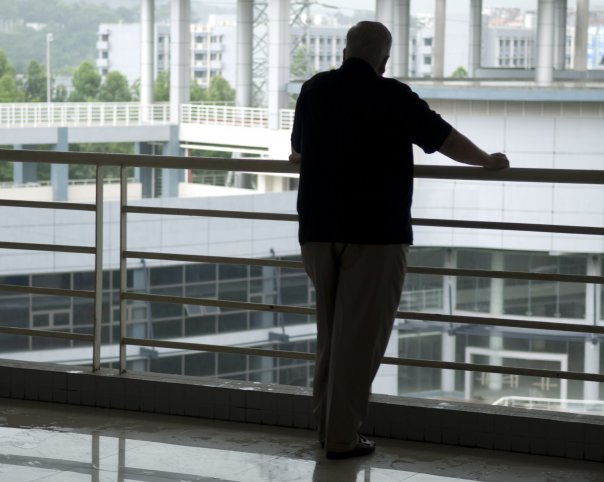The Global Leadership Summit is a great resource for you as a leader, your team, your organization and ultimately for your community. But to make the GLS a catalytic resource for a city movement, we are learning that there are some things that you can do to be intentional about creating movement prior to the GLS.
What is moving?
First, determine what is already moving your city. What organizations are changing the narrative?
What non-profit, what church, what governmental group or what businesses are moving initiatives forward to improve key issues in your city? Or are there some collaborative efforts that are addressing some of the underinvested neighborhoods? We have an opportunity at the GLS to add value to movement.
One of the best national resources available around city movements is the map at City Gospel Movements. This map includes over 600 links to groups and nonprofits around the country that are attached in some form to city movements.
 Names like City Unite, For Charlotte, For Evansville, Restore Strategies, For Philly, Transform Minnesota, Toledo Together, Jesus loves Kalamazoo, Unite my City, City Unite Boulder, Treasure the Valley, One City, One Church-Louisville, Engage Chicago, Together Chicago, Light the City, Serve Syracuse and the list goes on and on.
Names like City Unite, For Charlotte, For Evansville, Restore Strategies, For Philly, Transform Minnesota, Toledo Together, Jesus loves Kalamazoo, Unite my City, City Unite Boulder, Treasure the Valley, One City, One Church-Louisville, Engage Chicago, Together Chicago, Light the City, Serve Syracuse and the list goes on and on.
I have no illusion that everybody on this list is a perfect collaborator, but this certainly is a vast list of potential partners that are looking to move things in cities across the country. City Movements are about collaborative muscle and GLS can add value to those movements. Ask yourself and your team, what’s moving in our city?
What needs to move?
Second, What needs to move in your city? This is about the process of data mapping the city narrative.
 Everybody has thoughts about the needs of a city, but often one of the best ways to create focused movement is real data. We are starting to see some great examples of data mapping, but one of the best comes from For Charlotte. They have done a great job of evaluating and assimilating the narrative in Charlotte. The Executive Director explains the process here. You can see the full report here.
Everybody has thoughts about the needs of a city, but often one of the best ways to create focused movement is real data. We are starting to see some great examples of data mapping, but one of the best comes from For Charlotte. They have done a great job of evaluating and assimilating the narrative in Charlotte. The Executive Director explains the process here. You can see the full report here.
Another resource for data mapping comes from an organization called Seeds to Oaks. They have a 360-degree tool that is designed to assess and provide data on the opportunities in the city, especially in specific neighborhoods. Often you can pull data from your local government, community surveys and online resources, but data is vital to move from opinion to reality and the more formal it is presented, the more it drives the synergy of efforts.
The Intercession Group in Warsaw Indiana is a GLS site and they just recently completed their data mapping project. Click here to read it.
Whether you use formal processes or just do some of your own research and assessment, data brings a united and validated focus to city movement efforts.
Who is moving things?
In every city, there are men and women who are known for making things happen. Sometimes they are prominent positions like the Mayor or top business leaders, but sometimes the movers and shakers in a city are less about position and more about focus. Who are those people in your city?
 Eric Swanson is his book “To Transform a City”, presents the idea of connecting the dreams of the city and the callings and capacity of the church. I am taking a little liberty with Eric’s model, but the essence of the idea is conversations with key movers and shakers and working to figure out where things that want to happen in the city intersect. A city leader might have a dream to build a new highway through town, but that would rarely connect to the capacity and calling of the church. But the restoration of disinvested neighborhoods where justice issues are elevated could be a bullseye for all.
Eric Swanson is his book “To Transform a City”, presents the idea of connecting the dreams of the city and the callings and capacity of the church. I am taking a little liberty with Eric’s model, but the essence of the idea is conversations with key movers and shakers and working to figure out where things that want to happen in the city intersect. A city leader might have a dream to build a new highway through town, but that would rarely connect to the capacity and calling of the church. But the restoration of disinvested neighborhoods where justice issues are elevated could be a bullseye for all.
So what does this all have to do with the GLS?
As we gather every sector in the community and we provide fresh, actionable leadership content and cast a grander vision to a large group of influencers in your city, what if you could expose them to the top issue(s) that you find threaded through what is moving, what the data says is needed and what matches the dreams of top community leaders? Maybe it is crime, foster care, education, housing, poverty…. the GLS has the potential to add value to some of the highest priorities of your city. That is the foundation of serving a city movement.
